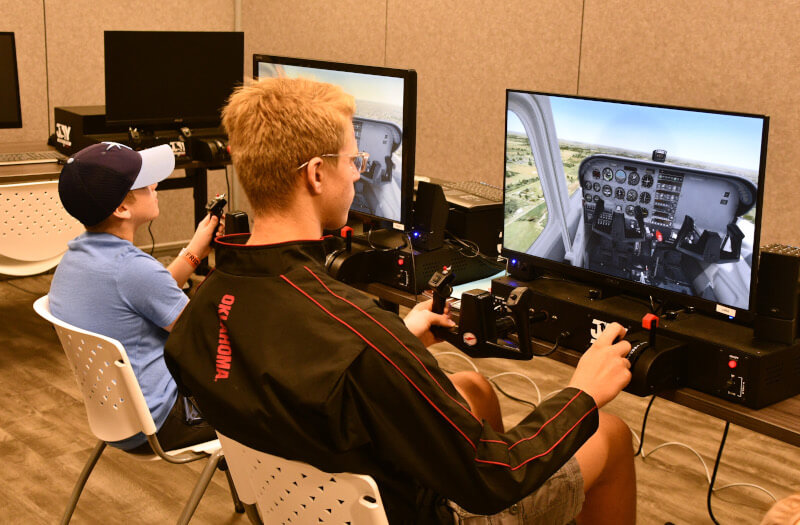 Creating a realistic flight simulator experience doesn't have to drain your bank account. For aviation enthusiasts and aspiring pilots, setting up a flight simulator at home is a thrilling way to hone your skills and indulge your passion without the high costs associated with actual flight time. In this blog post, we'll dive into how you can build an impressive flight simulator setup on a budget, focusing on the essential components like hardware, software, and peripherals.
Creating a realistic flight simulator experience doesn't have to drain your bank account. For aviation enthusiasts and aspiring pilots, setting up a flight simulator at home is a thrilling way to hone your skills and indulge your passion without the high costs associated with actual flight time. In this blog post, we'll dive into how you can build an impressive flight simulator setup on a budget, focusing on the essential components like hardware, software, and peripherals.
1. Choosing the Right Computer
The heart of your flight simulator setup is a reliable computer. You don't necessarily need the latest and most expensive model, but you do need a system that can handle the demands of flight simulation software. Here are key specs to consider:
- Processor (CPU): Aim for at least an Intel i5 or AMD Ryzen 5. These processors offer a good balance between performance and cost.
- Graphics Card (GPU): A mid-range card like the NVIDIA GTX 1660 or AMD Radeon RX 580 is sufficient for decent graphics without breaking the bank.
- RAM: 16GB of RAM is ideal to ensure smooth operation and multitasking.
- Storage: A solid-state drive (SSD) with at least 500GB of storage will improve load times and overall system responsiveness.
2. Selecting Flight Simulation Software
There are several great flight simulation software options that are both affordable and realistic:
- Microsoft Flight Simulator X (FSX): Often available on sale, FSX is a veteran in flight simulation that continues to be popular due to its extensive aircraft library and modding capabilities.
- X-Plane 11 or 12: Known for its incredible realism and physics, X-Plane is a bit more expensive but worth the investment for the serious enthusiast.
- FlightGear: A completely free, open-source simulator that boasts a large community and plenty of customization options.
3. Investing in Essential Peripherals
To truly enhance your simulation experience, invest in the following peripherals:
- Joystick/Yoke: A joystick can be purchased relatively inexpensively and is crucial for realistic control. The Logitech Extreme 3D Pro is a great entry-level option.
- Throttle Quadrant: For a more comprehensive setup, add a throttle quadrant to manage engine controls more realistically.
- Pedals: Rudder pedals are important for controlling the aircraft's yaw and finding pedals can sometimes be done affordably second-hand.
4. Opt for Used or Refurbished Equipment
One of the best ways to save money is by purchasing used or refurbished hardware. Many enthusiasts upgrade their setups regularly and sell their older but still serviceable equipment at reduced prices. Websites like eBay, Craigslist, and specialized flight sim forums are excellent places to find deals.
5. DIY Modifications and Upgrades
For the hands-on hobbyist, building or modifying your own peripherals can be a cost-effective and rewarding way to enhance your setup. There are numerous tutorials online that can guide you through the process of building DIY cockpit panels, instrument modules, and more.
6. Join Online Communities
Becoming a part of online flight sim communities like AVSIM, FlightSim.com, or the X-Plane forums can provide invaluable advice, exclusive downloads, and tips on where to find the best deals. Often, these communities are the first to know about discounts on software and equipment.
7. Keep an Eye on Sales and Discounts
Finally, keeping an eye on sales, especially during major holiday seasons or events like Black Friday, can lead to significant savings on both hardware and software.
By carefully selecting your components, taking advantage of second-hand deals, and engaging with the flight sim community, you can build a budget-friendly flight simulator setup that brings the thrill of flying into your home without a hefty price tag. Whether you’re practicing IFR approaches or just enjoying scenic VFR flights, a well-assembled flight simulator is an invaluable tool for any aviation enthusiast. Happy flying!





